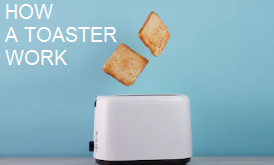English materials for
Secondary school in México
Secondary school in México
Second Grade
Unit 6
Lesson plan
Lesson plan | Videos |Worksheets & Handouts | PowerPoint presentations
Exercises for students | Project Ideas | Pop Quizzes & Exams
Exercises for students | Project Ideas | Pop Quizzes & Exams
|
Introduction (10 mins.) In pairs, T asks Ss to write on their notebooks a list of machines or devices they use every day. Then, Ss have to classify them according to the place where they use them, for example at home, school, kitchen, living room, etc. T invites Ss to share their lists with others. Development (20 mins.) Now, Ss label 9 home appliances. Then, T asks Ss if they know how those appliances work. Ss have a class discussion about the topic. T asks Ss: 1. Where can they get information about those appliances?
T asks Ss to identify/label the elements in the infographic.
Closure (5 mins.) T asks Ss what they have learned today. Then, T reads aloud to the class the achievements for this unit and encourages Ss to share their ideas about the meaning of each achievement. Ss say their expectations they have of the unit. Introduction (10 mins.) T draws on the board elements of an infographic such as pie charts, bar graphs, mind charts, maps, Venn diagrams, tables, etc. Then, in pairs Ss label them. Ss take notes. Development (20 mins.) Ss watched a video of the types of infographics. Then, T asks Ss:
T hands out a worksheet for each S and asks them to label the types of infographics. Then, T asks Ss to list the elements that they see in each type. Closure (5 mins.) T asks Ss the benefits of using infographics. These could be some benefits:
|
|
|
Introduction (10 mins.) Ss match a list of 9 verbs with images. Development (20 mins.) T draws on the board a table with the following 5 headings: turn on/off, press the button, download, place the cd and open. Then, T encourages Ss to brainstorm machines and devices that fit each category. For example:
T asks Ss to choose only one device or machine from each category and illustrate the verbs. Closure (10 mins.) Ss solve a word search puzzle about action verbs. Introduction (10 mins.) T asks Ss if they know what a technical term is. T explains what it is to Ss. Technical term: A word that has a specific meaning within a specific field of expertise. T encourages Ss to give examples of them. For example:
Here’s a list of words: receiver, food, user, amplifier, box, electron, pen, magnetron, water, microwave, transmitter, heat, diode, antenna, table, bottle, volt, and byte. The bold ones are technical terms. Development (20 mins.) Ss watch a video “How radio broadcast works” and list technical terms what they hear. T asks Ss to complete a text about how a radio works. Consolidation (10 mins.) In pairs, Ss make a diagram to represent how a radio works. Closure (10 mins.) Ss match the parts of a radio with their definitions/descriptions:
|
|
|
Introduction (10 mins.) Ss watch a video about “heating effects of electric current”. T asks Ss to answer the following questions:
First, T draws a chart with 2 columns labeled with the following headings: electrical energy and heat energy. Then, T writes on the board a list of household devices and appliances. After that, T asks Ss to classify them. Here’s a list: 1) television 2) alarm clock 3) oven 4) blender 5) coffee maker 6) computer 7) toaster 8) heater 9) printer 10) microwave oven 11) clothes iron 12) fridge. Answers:
First, Ss label the parts of a clothes iron. Then, Ss put in order the steps of how it works. And finally, match some phrasal verbs with their meanings. Closure (5 mins.) T invites Ss to think about other appliances or devices that use electric current for heating. Possible answers: incandescent lamps, electric oven, hair dryer, electric water heater, electric blanket, electric frypans, etc. Introduction (10 mins.) T randomly picks Ss and asks them to answer the following questions:
Development (20 mins.) Ss label images to illustrate adjectives that are used for making comparisons. First, T introduces making comparisons using adjectives. T explains to Ss that there are rules for forming comparative and superlative adjectives. T gives Ss examples. Consolidation (15 mins.) T asks Ss to fill in the following sentences:
Closure (5 mins.) T asks Ss to summarize the rules for forming comparative and superlative adjectives. |
|
|
T puts Ss into small teams. T asks Ss to choose a machine or device to design an infographic in which they will explain the operation of it. Ss have to describe what it is used for. Ss discuss possible sources to search for information about the machine’s functioning. Ss decide which information they are going to use and discard the rest. Ss make a list of statements describing how the machine or device works. Ss draft a template for the infographic and add lines and arrows to link ideas. Ss write the final version of the infographic. Ss paraphrase the information they use. Ss list the steps to explain how the machine or device works. They add drawings, diagrams, and additional graphic information. Ss write additional notes. Ss take some minutes to practice reading the information in the infographic and complement it. Ss display the infographic in a visible place of the classroom and take it turns to present and explain how the machine or device works. |
|

